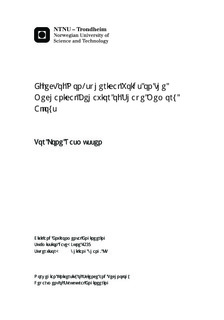Effect of Non-spherical Voids on the Mechanical Behavior of Shape Memory Alloys
Master thesis
Permanent lenke
http://hdl.handle.net/11250/237337Utgivelsesdato
2013Metadata
Vis full innførselSamlinger
Sammendrag
The use of shape memory alloys has seen a steady increase since its discovery.Understanding the mechanical behavior behind a ductile fracture of these materialsis important to further the applicability of shape memory alloys. Some researchon spherical microvoids in shape memory alloys has been conducted, but there isnot much literature on non-spherical voids.The effect of non-spherical microvoids on the mechanical behavior of shape memoryalloys has been explored in this thesis. By running numerical simulations inthe commercial finite element software Abaqus, several different void shapes andsizes were analyzed. The simulations were limited to uniaxial stress without superplasticity.The results suggest that the width of the void, not the heigth/widthratio or the void volume fraction, has the greatest influence on the transformationstresses. Due to the limitations of this thesis, further studies should be conducted.The results had some differences compared to similar studies. The nature of thedifference is unknown, and should be further explored. A more in-depth studywith more shapes and void volume fractions is also needed to confirm the findingsof this report. Both the effect of superplasticity, as well as a triaxial stress statemay produce different results. A study of the effect of superplasticity should beemphasized, as plasticity is a very important part of a material?s behavior.
